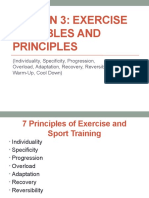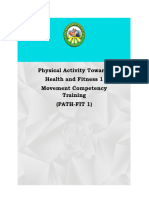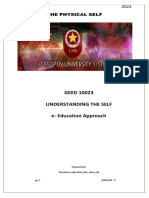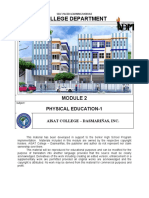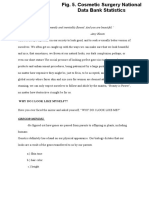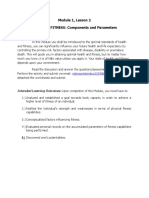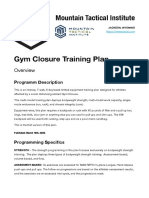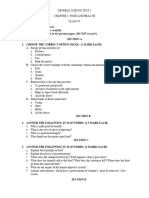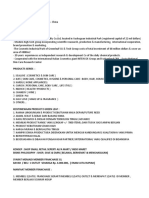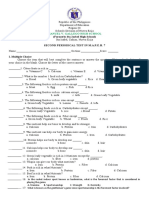100% found this document useful (1 vote)
1K views27 pagesExercise Variables and Principles
This document discusses key components of exercise training sessions including warm-up, conditioning, cool down, stretching, and the FITT principle. It explains that warm-ups should last 5-10 minutes and prepare the body for conditioning. Conditioning involves 20-60 minutes of aerobic, resistance, or sports activities. Cool downs last 5-10 minutes and allow gradual recovery. Stretching should be done for 10 minutes after warm-ups or cool downs. The FITT principle refers to frequency, intensity, time, and type of exercise. It also outlines the principles of individuality and specificity in exercise training.
Uploaded by
roselhyn SottoCopyright
© © All Rights Reserved
We take content rights seriously. If you suspect this is your content, claim it here.
Available Formats
Download as PPTX, PDF, TXT or read online on Scribd
100% found this document useful (1 vote)
1K views27 pagesExercise Variables and Principles
This document discusses key components of exercise training sessions including warm-up, conditioning, cool down, stretching, and the FITT principle. It explains that warm-ups should last 5-10 minutes and prepare the body for conditioning. Conditioning involves 20-60 minutes of aerobic, resistance, or sports activities. Cool downs last 5-10 minutes and allow gradual recovery. Stretching should be done for 10 minutes after warm-ups or cool downs. The FITT principle refers to frequency, intensity, time, and type of exercise. It also outlines the principles of individuality and specificity in exercise training.
Uploaded by
roselhyn SottoCopyright
© © All Rights Reserved
We take content rights seriously. If you suspect this is your content, claim it here.
Available Formats
Download as PPTX, PDF, TXT or read online on Scribd
/ 27
